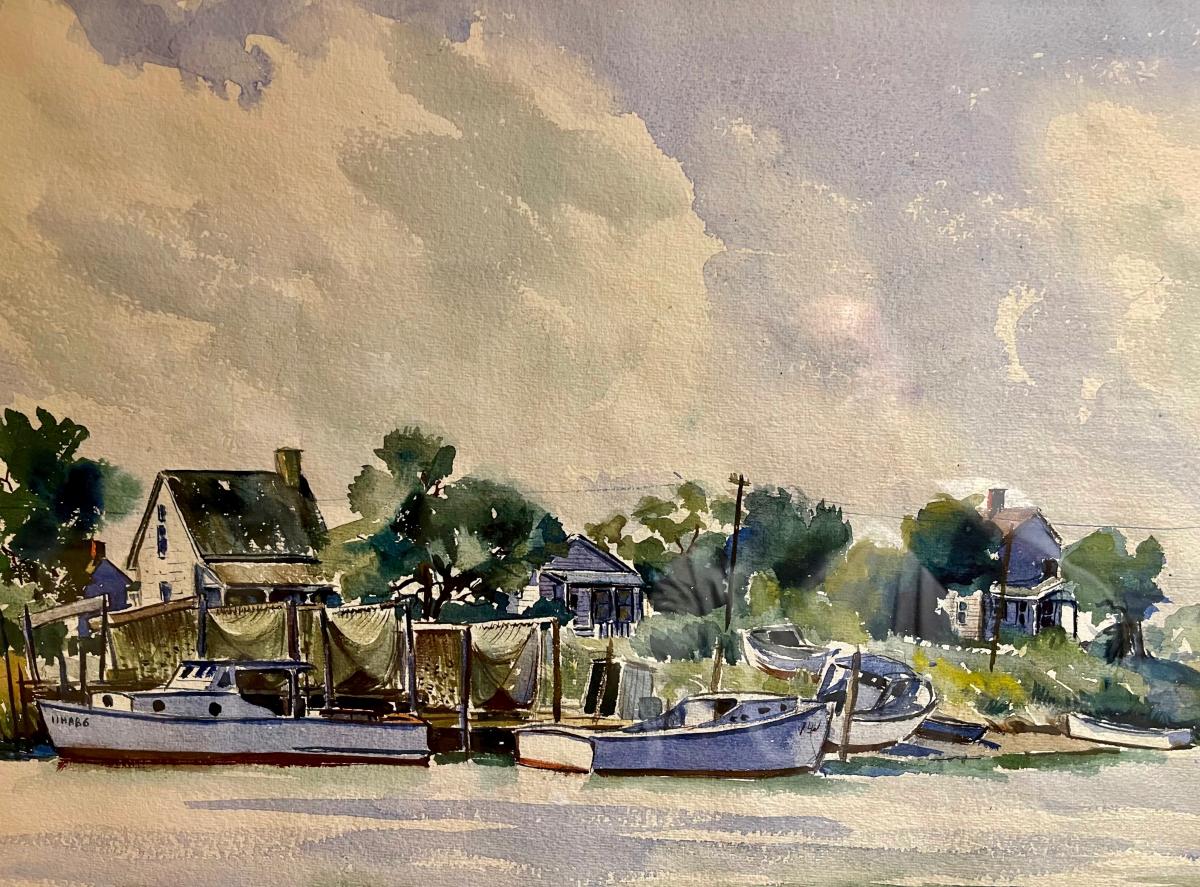
Sunset over PT Hambleton’s crabbing and oystering operation and its associated workboat fleet in Grace Creek. Photo by Dennis Forney
I sat on a dock one evening this week listening to the Orioles taking a trouncing from the Mariners of Seattle. Across the Chesapeake, on the Severn, my grandson, Ford, was asking his Alexa machine about the score of the game. He picked up a hint of glee when Alexa announced the Mariners were up by seven runs.
“We all know Alexa is rooting for the Mariners,” he said.
Amazon, Alexa’s parent company, is headquartered in Seattle.
Despite the game, the evening proved pleasant. The Birds returned the trouncing the following night. The appearance of the team’s prominence at the bottom of the American League East deceives. It’s a dynamic team with plenty of power, a strong bullpen, and glimmers of promise in its starting rotation.
Yes, along with Alexa, I’m a hopeless homer. “Hope springs eternal in the human breast.” But this isn’t a column about baseball; it’s really about boats.
The sun finally gave up its heat-lamp intensity that evening as it settled into the west. It left in its place a warm orange glow.
Painterly it was. The color cast a certain serenity over PT Hambleton’s crab and oyster operation. The fleet of watermen’s boats shoehorned in and around the docks and landing, quieting along with the evening following a busy day.
The high bows, low freeboard and graceful sheer of the vessels sloping from stem to stern reflect the mostly genteel waters of the Chesapeake where their owners ply their trade.
On the other hand, the watermen’s vessels on Delaware Bay tend to be boxier. Their higher freeboards and less prominent sheer keep out the more cantankerous chop and seas of the rougher, rawer and shoal-ridden Delaware. With its three and four knots of current in full flood and ebb tides, the Delaware’s northwest and southeast orientation mean its flowing waters often collide with northerly and easterly winds. The result is as constant as it is predictable.

Dover artist Betty Harrington painted this watercolor in 1938 at Bowers Beach in Delaware, where the Murderkill River empties into Delaware Bay. Murderkill is Dutch for muddy river and dates back to the 1600s when the Dutch claimed all the territory between the North River (the Hudson) and the South River (the Delaware) and called it New Netherlands. Note the higher free-boarded workboats and the fishing nets hanging to dry.
That said, the East Coast’s two most prominent estuaries, nestling the Delmarva Peninsula between them, contribute inestimably to the nation’s history, culture, seafood supply and maritime architecture.



Write a Letter to the Editor on this Article
We encourage readers to offer their point of view on this article by submitting the following form. Editing is sometimes necessary and is done at the discretion of the editorial staff.